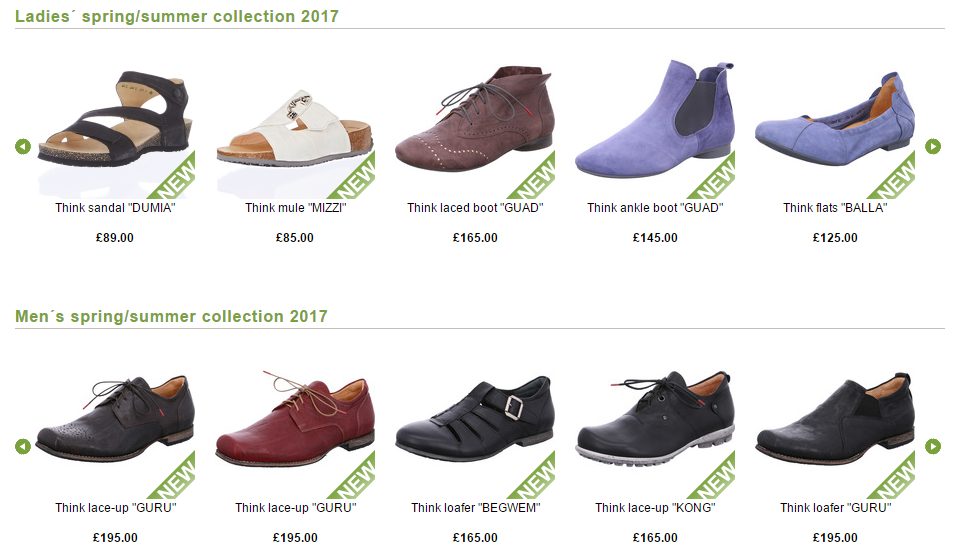Personalization of product recommendations opens a hidden door for online retailers. The first step out of this door is a tangible increase in recommended sales. However, Big Data driven product recommendations leave retailers with more unsolved problems, which can be solved with Progressive Personalization new features. Most burning Big Data problems are:
Problem #1: Mathematical Algorithms lose real Personalization
A lot of retailers are not comfortable with the current logic of Big Data based recommendations. Products are recommended based on the mathematical algorithms at the heart of the recommendation engine. Yes, many customers, who bought this house plant also bought this crib. But why? Big Data reacts like “THERE! NO TIME TO EXPLAIN!” If the majority of other customers bought this product as well, the recommendations will propose it. Period.
Problem #2: Ignoring a Customer’s Individual Characteristics for Personalization
The importance of the individual characteristics is a vast topic and requires a whole new article to uncover. Meanwhile, let’s take a look at this particular example:
A male visitor is looking at a pair of fine women’s boots (reasons may vary from “My wife is bugging me to buy her new boots” to “Lovely woman in the photo!”). A Big Data driven recommendation engine will show this customer a purse and a dress. As the majority of all customers who paid attention to these boots also bought the purse and the dress, the recommendation engine found its logic.
Where the recommendation engine failed is that it couldn’t determine the person’s gender. What do we see as a result then? Recommendations became useless: the probability that this man would be really interested in buying women’s products (especially many of them) tends to be 0%. This is actually the core problem of Big Data driven personalization. This article aims to solve it.
Problem #3: The Notorious Cold-Start problem
Big Data is able to act only when you have a detailed record on each customer, including their browsing history, purchase history, favorite products and so on. New customers are stripped on the privilege to be advised anything: unsurprisingly, the recommending engine does not yet know what to recommend.
How to Fix Product Recommendations for Mid-Sized E-Commerce Stores
What should you do for your e-commerce in order to bypass this burning issue? Let’s see what can be improved! Not to scatter across various retail segments, let’s focus on Apparel & Accessories.
Solution #1 Mixed Recommendations
When a new customer comes to your online store, nothing is defined yet, and Big Data is unattainable at this moment. Lots of e-commerce rush to the first solution coming to mind – depersonalized product recommendations in hope to replace quality with quantity.
The website chooses the most popular products (the major sales). It mixes them and adds them to product recommendation blocks. As a result, this is what a new customer can see:

This is definitely not accurate mix : every kind of footwear is in one block. From Men’s to Women’s. From sneakers to winter boots.
You can find a similar example in Sarenza’s online store, except the uniting factor here is the discount:

What is the advantage? The simplicity of the process. It doesn’t take much to produce such recommendations, and there is still a chance (a very little one) that they will generate you some sales. As Big Data is taking a nap waiting for the data to be collected, this is the only chance for an inexperienced online store to cover the losses.
What are the drawbacks? Recommendations are sloppy, imprecise and the same for every visitor. Without personalization, it means that you will have almost no recommended sales. Let’s get back to the first example with the male visitor – no recommended items are relevant for him, maybe not even the boots.
Solution #2. Recommendations only for the High-Priority Segment
Buying capability of your audience varies from segment to segment. Lots of retailers choose a popular shortcut: they concentrate on a single segment and ignore the rest (which usually represents the vast majority) of the customers.
Here, Jimmy Choo’s exemple features both women’s and men’s shoes but somehow recommends only the women’s:

What is the advantage? Again, simplicity. You choose to recommend products gender-wise and target only one gender: in this example – women.
What are the drawbacks? Zero relevance to the majority of the opposite gender. Almost no recommended sales. Targeted at the specific gender, this type of recommendations is designed to ignore anybody else.
Solution #3. Repeating Recommendation Blocks
This is an improved model of the previous solution with the only difference being that the online store displays two repeating recommendation blocks (one for men and one for women). For instance, this is how Think! Store tries to cover its audience:

What is the advantage? Both genders are targeted in hope to fix the flaw.
What are the drawbacks? Personalization is missing other important parameters such as brand preferences, color preferences, shoe size and so on. One parameter cannot cover for everything.
Solution #4. Progressive Personalization Technology
All the above solutions are exploited when the store doesn’t have sufficient data about its visitors to give Big Data a kick. What they all have in common is the “better than nothing” working principle, and in some rare cases, it is indeed better than nothing.
Is Progressive Personalization any different? This solution starts working from the first visitor’s clicks, relies strictly on the data collected, operates by a clear and simple logic and doesn’t get tired of including new parameters every second. It is different than Big Data based personalization. Progressive Personalization works individually with each customer profile and includes into computations parameters such as the visitor’s:
- Gender
- Age
- Location
- Relationship status
- Number, age and gender of the children in the family
- Physiological properties (clothing and shoe size, hair and skin type, and current condition)
- Income level
- Brand preferences
- And multitude other parameters…
You can easily obtain a portion of this data from the customer profile on the site – that if the customer has registered and filled out its profile information. The major rest of the data starts to be deduced from the first clicks being collected from the customer’s behavior. Does the customer have a child? Progressive Personalization will collect browsing data and see if there are enough viewed products for kids to make a positive conclusion.
In theory, ANY parameter can be tracked by the store (any that your store deems necessary). For example, typical significant parameters for fashion stores are the visitor’s gender, age, clothing and shoe size, brand preferences.
Product recommendations WITH vs WITHOUT Progressive Personalization
Speaking about, let’s have a look to what recommendation section looks like with no Progressive Personalization:
Then , if you add at least just one parameter from the Progressive Personalization (here the visitor’s gender) the results changed accordingly:

Adding a single parameter- the visitor’s gender- results in a significant change:



Both examples are presented to the same male customer, but only one product in the first example is likely to generate sales. Whereas in the second example the recommendation algorithm chose every items accurately.
Here is another example of Progressive Personalization: if a visitor is checking on women’s products at the 6PM online store, the recommending engine dynamically changes the recommendations. As a result, women’s shoes recommendation looks like:
What are the advantages? The recommended product is relevant, displayed at the right time and in the right recommendation block. There is almost zero mismatches. The process is precise and targets by gender, clothing and shoe size, brand preferences and other category important parameters.
What is the drawback? It is the most labor intensive option, especially if you decided to create your own algorithms instead of employing existing solution.
Algorithms are extremely hard to replicate or reverse engineer and require years and hundreds of thousands of dollars to create. Alternatively you can choose to use a ready solution based on that technology.
This new technology is available to every average online business. You only have to choose the tracking parameters, deduct the assessment criteria and write new sophisticated algorithms to form dynamic product recommendations. Or just employ a ready-to-use solution, Progressive Personalization.





